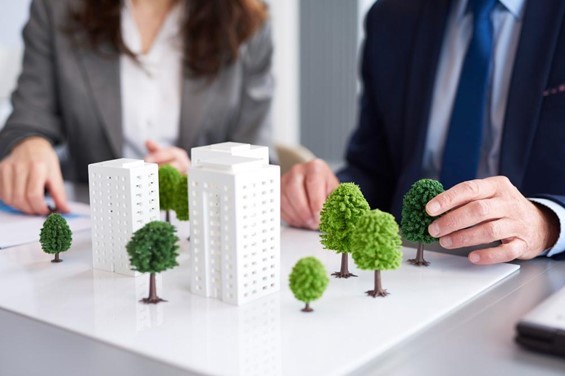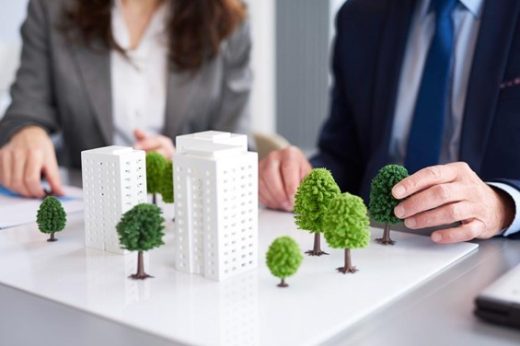Trends in real estate development, Future of urban living, Property selling advice
The Future of Urban Living: Trends in Real Estate Development
June 13, 2024
No matter if you are a developer, investor, or someone interested in real estate. Understanding the changes in the industry is crucial. It can give you a valuable understanding of how to make informed decisions. Like any other industry, real estate is also transforming quickly. Therefore, staying ahead of the curve in this dynamic industry is more than necessary.
Consequently, we explore some of the most prominent property development trends. These trends provide a glimpse into the future of real estate and offer valuable insights for investors and developers. Please read to learn about them.
Sustainable and Green Building Practices
In the past few years, there has been an increased emphasis on sustainability within the real estate industry. The world is becoming more aware of environmental challenges. Hence, developers and architects have started embracing eco-friendly construction techniques. They are focusing on sustainable architecture to make multipurpose buildings. Along with meeting the occupants’ needs, these buildings also minimize their environmental impact.
Sustainable real estate development involves combining environmentally friendly features throughout the construction process. It also includes implementing energy-efficient systems and using renewable energy sources. It also involves utilizing recycled materials and optimizing water usage.
Furthermore, one of the prominent green building trends is the integration of renewable energy sources. These energy sources include solar panels or wind turbines. These technologies let buildings generate their clean energy. Ultimately, it decreases carbon emissions and reduces reliance on fossil fuels. Additionally, sustainable architecture focuses on ventilation and maximizing natural light. It does this to reduce the dependability of air conditioning systems and artificial lighting.
Besides, Eco-friendly construction practices focus on utilizing recycled or locally sourced materials. This reduces waste and supports local economies. Furthermore, sustainable buildings usually combine rainwater harvesting systems and greywater recycling. These buildings do this to lessen water consumption. The adoption of these green building practices is beneficial for the environment. These sustainable practices have shown lower operating costs and improved indoor air quality. All this results in healthier living environments and increased property value.
Technology Integration in Real Estate Development
Vicky Cano, Chef & Recipe developer at mealfan, said, “Technology is playing a crucial role in today’s rapidly evolving world. Notably, it is shaping the real estate industry. Incorporating technology into real estate has given rise to intelligent buildings. This idea and innovation have propelled the industry towards a new era of innovation. Technological innovations have changed how properties are designed, managed, and built. Technologies like virtual reality tours and advanced data analytics are driving digital transformation. Especially in property development.”
Moreover, intelligent buildings are built with outstanding features. These features include state-of-the-art sensors and automation systems. These features offer increased efficiency, sustainability, and convenience. They enable energy consumption and improve security measures. Plus, it also provides seamless connectivity for the residents. The technology trends in real estate are reshaping the whole value chain of property development. The integration of technology in real estate development has plenty of benefits.
Along with enhancing operational efficiency, it also creates new opportunities for developers. It allows them to deliver innovative solutions. These solutions address the evolving necessities of modern society. As we all know, we are moving towards a digitally driven future. Hence, real estate developers need to embrace these technological advancements. Plus, they leverage them to stay competitive in a changing market landscape. By embracing pro-tech innovations, developers can unlock new ways to implement sustainability.
Mixed-Use Developments and Urban Revitalisation
Rudy Bush, Founder at Wiringgerman, said, “Mixed-use developments have become a crucial trend in urban revitalization projects. It transforms city centers into thriving and vibrant communities. These developments combine commercial, residential, and recreational spaces. As a result, it creates live-work-play environments. These environments can cater to the different needs of residents and visitors. Urban regeneration initiatives are focusing on mixed-use properties. These initiatives are doing this to breathe new life into ignored areas. These projects entice people back to city centers. Also, it addresses the need for sustainable urban planning and affordable housing.
The concept of mixed-use developments goes beyond providing living spaces. It aims to create inclusive communities. This approach reduces commuting times. Also fosters a sense of belonging and community engagement.”
Moreover, mixed-use properties contribute to economic growth. It does this by attracting businesses and creating job opportunities. Revising underutilized areas stimulates local economies. These projects offer a holistic approach to urban planning. This planning promotes sustainability, affordability, economic growth, and community well-being.
Co-living and Co-working Spaces for the New Generation
A new trend is emerging in the continuously evolving landscape of living and working. This is the trend of co-living and co-working spaces. The preferences and needs of the new generation drive this trend. The generation that values community, flexibility, and work-life balance. Shared living places provide a unique solution and alternative to traditional housing options. These places offer affordable accommodation. Also, it fosters a sense of connection among like-minded people. Co-living spaces build an environment that encourages networking, collaboration, and social interaction.
Brian Bosscher, owner and founder of Condo Control, said, “The surge of flexible workspaces is parallel with this change in living arrangements. Co-working places give a flexible alternative. This alternative allows people to work independently. Also, it will enable me to collaborate in a dynamic environment. The mixture of co-living and co-working spaces presents an attractive proposition. Particularly, for people with different backgrounds. For instance, freelancers, digital nomads, entrepreneurs, and remote workers. These unique environments give an excellent place to live. Moreover, it also provides a space to network, learn and build valuable connections.”
While navigating through this new era, it becomes evident that co-living and co-working spaces are more than just trends. They are changing the future of how we live our lives and conduct business.
Wellness-Oriented Design and Health-Conscious Amenities
In the last few years, there has been an increased emphasis on wellness-focused developments. Also, there is an emphasis on health-conscious amenities in the real estate industry. This trend is known as “Wellness-Oriented Design,”. This trend has earned significant traction. It is because people become more aware of the significance of their mental and physical well-being. Wellness-focused developments prioritize the creation of healthy buildings. This promotes an optimistic living environment. These projects combine design principles that focus on enhancing occupants’ well-being. They do this by considering multiple factors. These factors include natural light, air quality, acoustics, and access to nature.
Furthermore, wellness amenities have become a significant part of real estate projects. Developers are going beyond swimming pools and traditional fitness centers. They are doing so by integrating innovative features. These features cater to residents’ holistic wellness needs. These amenities include yoga studios, meditation rooms, and spa facilities.
It includes outdoor walking trails, exercise areas, and on-site nutritionists or wellness coaches.
Trends in real estate development Conclusion
In conclusion, the real estate development industry is constantly changing. Therefore, it has become crucial for the professionals in this field to adapt to the changes. Consumer preferences usually shift When new technologies emerge and make changes for betterment. Hence, developers need to stay ahead of the curve. Also, they must embrace innovative approaches.
Beware of the changing landscape of real estate involves knowing the market trends. Also, it includes leveraging technology to streamline processes. Plus, it also consists of understanding the necessities and desires of modern consumers. By staying informed about emerging technologies, developers can build better properties. These properties fulfill the demands of today’s market.
Comments on guide to Trends in real estate development article are welcome.
Building Articles
Residential Architecture
Property Advice
Building Design Posts
Choosing a cohesive design style for your home
Are You in the Gray Area in Your Mortgage?
How to Spruce Up Your Home with Personalized Prints
Comments / photos for the Trends in real estate development advice guide page welcome






